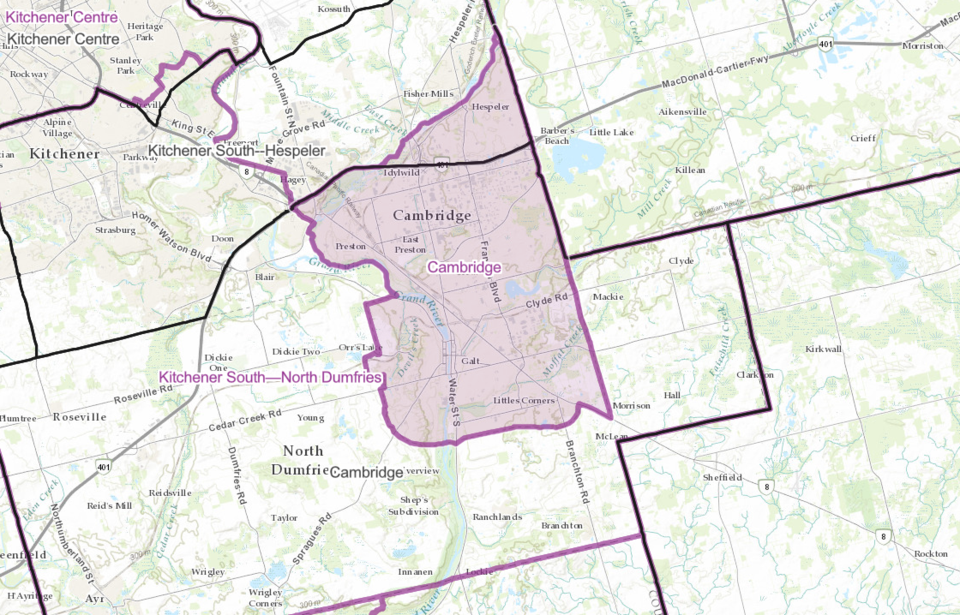The federal riding of Kitchener South-Hespeler could be eliminated and its geographic boundary redistributed if a proposal by the Federal Electoral Boundaries Commission for Ontario is approved by the House of Commons.
The proposal would also remove North Dumfries from the Cambridge riding to create a new riding called Kitchener South-North Dumfries.
Part of the new riding would encompass the area of south Kitchener currently served by Kitchener South-Hespeler.
For the most part, the proposed Cambridge riding closely follows the city boundary except in Preston Heights, Blair and Hespeler where it splits that section of Cambridge west of the Speed River. Those areas would become part of either the Kitchener-Conestoga riding for the Hespeler area west to the Kitchener boundary and north to Kossuth Road, or Kitchener South-North Dumfries for Blair and Preston.
The review and change is mandated to happen every 10 years under the Constitution of Canada "to reflect changes and movements in Canada's population."
Criteria such as average population numbers, communities of identity and interest, historical patterns of an electoral district, and geographic size of electoral districts come into play as the commission determines the new electoral districts.
The commission had the responsibility of creating one new electoral district, given that Ontario had been allocated 122 seats.
Ontario's surging and uneven population growth since 2012 is also driving the change.
It has resulted in "relatively wide population disparities in the 2012 map" and the need to remedy substantial population inequalities across all electoral districts, says the commission in an overview of the proposed redistribution plan.
In a mid-size city like Cambridge, the commission concluded that municipal boundaries could not always serve as an electoral boundary because its population exceeded the quota and continued population growth is expected.
Every commission has three members: a judge appointed by the Chief Justice of the province and two other members appointed by the Speaker of the House of Commons. Their role is to review the federal electoral boundaries for their province.
Ontario's commission includes the Justice Lynne C. Leitch, Karen Bird, a professor of political science at McMaster University and Peter Loewen, a professor of political science and the director of the Munk School of Global Affairs and Public Policy.
"In exercising its mandate under the Electoral Boundaries Readjustment Act and given the allocation of one additional district to Ontario, the commission found it necessary to propose many new electoral boundaries to correct wide variations in voter equality that have emerged across the province over the past decade due to population change" says Leitch, chair of the three-member commission.
Now that the proposed map has been presented, the commission will begin consultation with Canadians through public hearings.
Following public hearings, the commission will submit a report on their considerations and propose an electoral map to the House of Commons.
Any objections from members of parliament would be considered at that time and a final report will be prepared outlining the electoral boundaries for Ontario.
Written submissions on the proposed change are welcome until Sept. 25 followed by public hearings through Oct.
Those looking to give their input can participate in a virtual public hearing Sept. 27 at 6:30 p.m.
